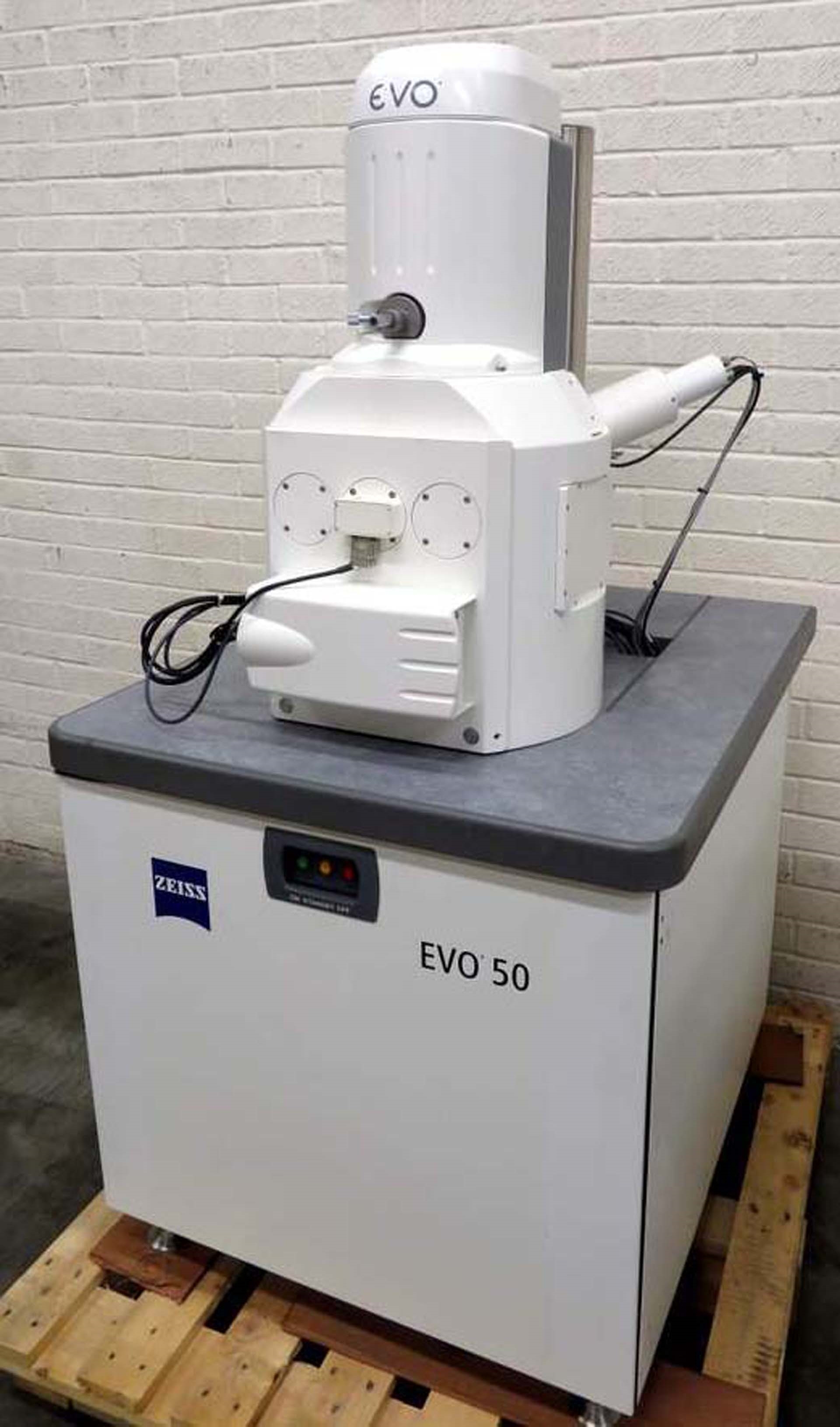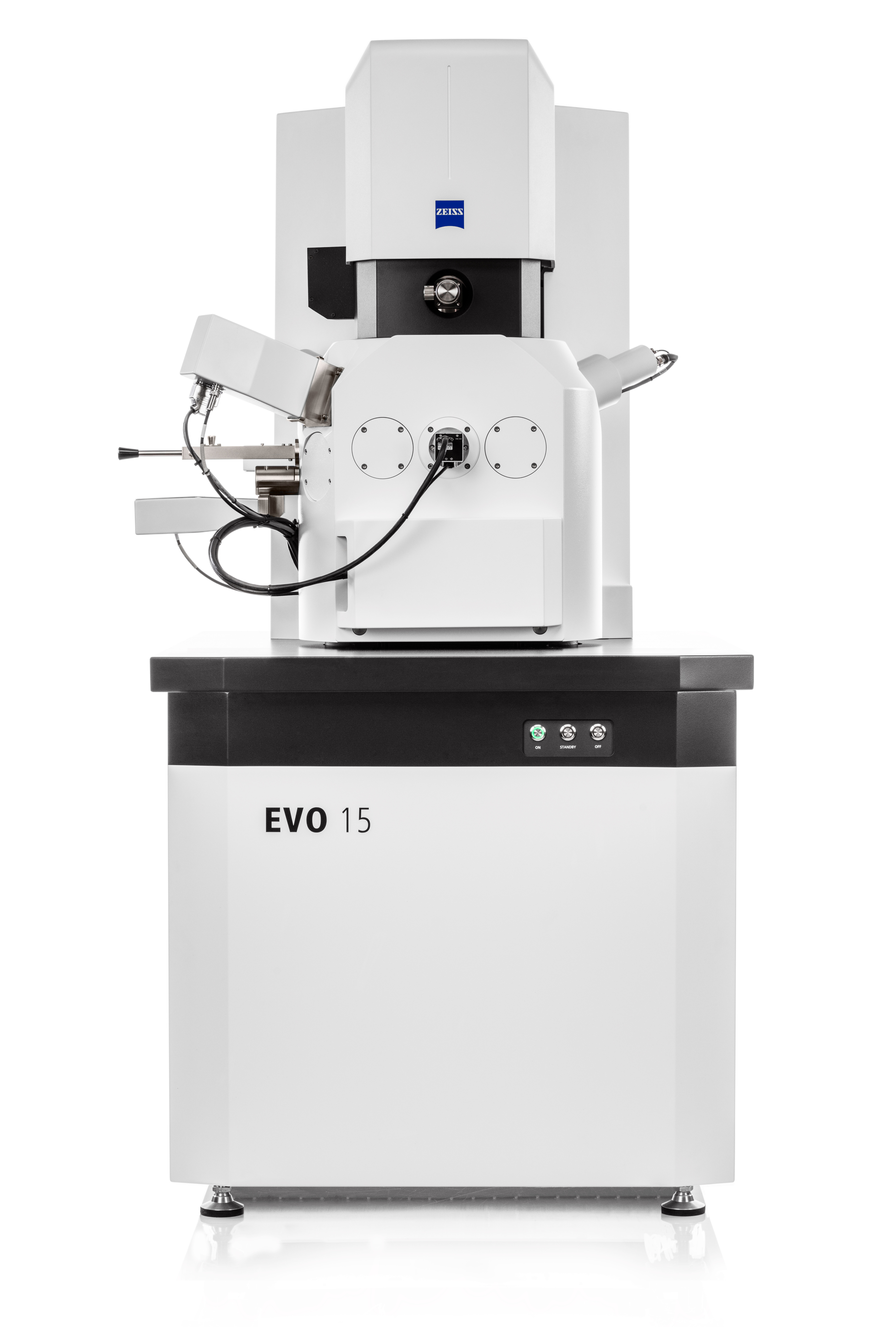Zeiss Evo 50 Scanning Electron Microscope
Modular platform for intuitive operation, routine investigations and research applicationsZEISS presents the new generation of its proven high performance scanning electron microscope (SEM): The new instruments of the ZEISS EVO family come with a variety of improvements regarding usability, image quality and seamless integration into multimodal workflows. With its comprehensive range of available options, the ZEISS EVO family can be tailored precisely to requirements in life sciences, material sciences, or routine industrial quality assurance.ZEISS EVO delivers best-in-class, high quality data – even with difficult requirements, e.g. If non-conductive parts need to remain unaltered to move from instrument to instrument in the course of an investigation in industrial quality assurance, or if samples need to be imaged in their natural hydrated state, e.g. For pollen classification.
For these requirements, ZEISS EVO offers various vacuum modes, such as high vacuum, variable pressure and high pressure, as well as different detector technologies (SE, C2D, C2DX, BSE, EDS). An optional lanthanum hexaboride (LaB6) emitter delivers more beam brightness for superior image resolution and noise reduction.The intuitive, user-friendly experience of ZEISS EVO appeals to both trained microscopists and new users.
ZEISS EVO-50 Variable Pressure SEM. Carl Zeiss EVO50VP Variable Pressure Scanning Electron Microscope. LaB6 emitter system. Digital image storage. Resolution of secondary electron image: - 2.0nm (at accelerating voltage 30kV). Resolution of backscattered electron image at variable pressure: - 4.5nm (at accelerating voltage 30kV).
ZEISS SmartSEM Touch is the highly simplified user interface developed specifically for the occasional operator who has very limited or no knowledge of operating an SEM, e.g. In central microscopy facilities or industrial quality assurance laboratories. “The new ZEISS SmartSEM Touch user interface of ZEISS EVO is so easy to learn – not only experienced microscopists, but also our engineers and interns who are not SEM experts are up to speed in 20 minutes. We really benefit from the system’s imaging and analytical capability. Its seamless integration into multi-modal workflows makes our life a lot more efficient”, says Jim Suth, Quality Manager at ECR Engines. The US-based high-performance engine production, research and development company uses ZEISS EVO for materials characterization and failure analysis.In many environments, whether academic or industrial, SEM material characterization is part of a workflow whereby samples are subjected to other imaging or analytical techniques, such as light microscopes or spectrometers.
ZEISS EVO can be configured to be part of a semi-automated multimodal workflow, with tools for seamless relocation of regions of interest and integrity of data collected from multiple modalities. In such configurations, ZEISS EVO enables highly productive correlative microscopy and analysis methods to provide users with more meaningful data and a deeper understanding of their samples.The post appeared first on.

About instrument (Carl Zeiss EVO 50)Scanning Electron Microscope is a versatile analytical microscope with a large specimen chamber and can handle large specimens at the analytical working distance of 8.5mm owing to a combination of the inclined detectors and the sharp conical objective lens.ENERGY DISPERSIVE X-RAY MICROANALYSISMicrostructures at SEM can be analyzed for its elemental composition in more detail using EDX system. This is a non-destructive analysis and the elements and their concentration in the sample can be determined reasonably accurately.

Scanning Electron Microscope Ppt
EDS (EDX) Analysis provides elemental/Phase composition analysis of a sample inside a SEM. Also microstructural analysis i.e. EBSD (Electron BackScatter Diffraction Analysis) can be done to characterize grain structures. INCA and AZtec from Oxford is a new and revolutionary materials characterization system that gathers accurate data at the micro- and nanoscales. About instrument (Nova NanoSEM 450)The Nova NanoSEM is a field-emission scanning electron microscope(FE-SEM), which attains ultra-high imaging resolution.
The NanoSEMSchottky field-emission source allows the user to achieve high imagingresolution at a range of 0.2-30 kV, at both low (high-resolution imaging)and high (micro analytical imaging) currents. Secondary electron (SE)imaging can be undertaken in both field-free and immersion mode forcomprehensive low-to-high resolution imaging of a variety of samples. TheNova NanoSEM is configured with a Bruker SDD-EDS detector and can bemanually fitted with a backscattered electron detector for the convenientvisualization of compositional differences across the specimen surface. Resolution1.0nm@ 30kVAcceleration Voltage0.2 to 30 kVMagnification5x to 1,000,000x with HR/UHR ModeField of View5.0 mm at the Analytical Working Distance (AWD)X-ray Analysis5.0 mm AWD and 35° take-off angleDetectorsIn-lens SE detector (TLD-SE)In-lens BSE detector (TLD-BSE)Everhardt-Thornley SEDLow vacuum SED (LVD)High sensitivity low kV Directional Backscattered Detector (DBS),BSD in all modes - quadrant semiconductor diodeContact DetailsConvener: Prof. KulkarniInternal:6102Staff Incharge: Samata SamalAnurag PrashadInternal:7140Internal:7140Operator: SandeepInternal.